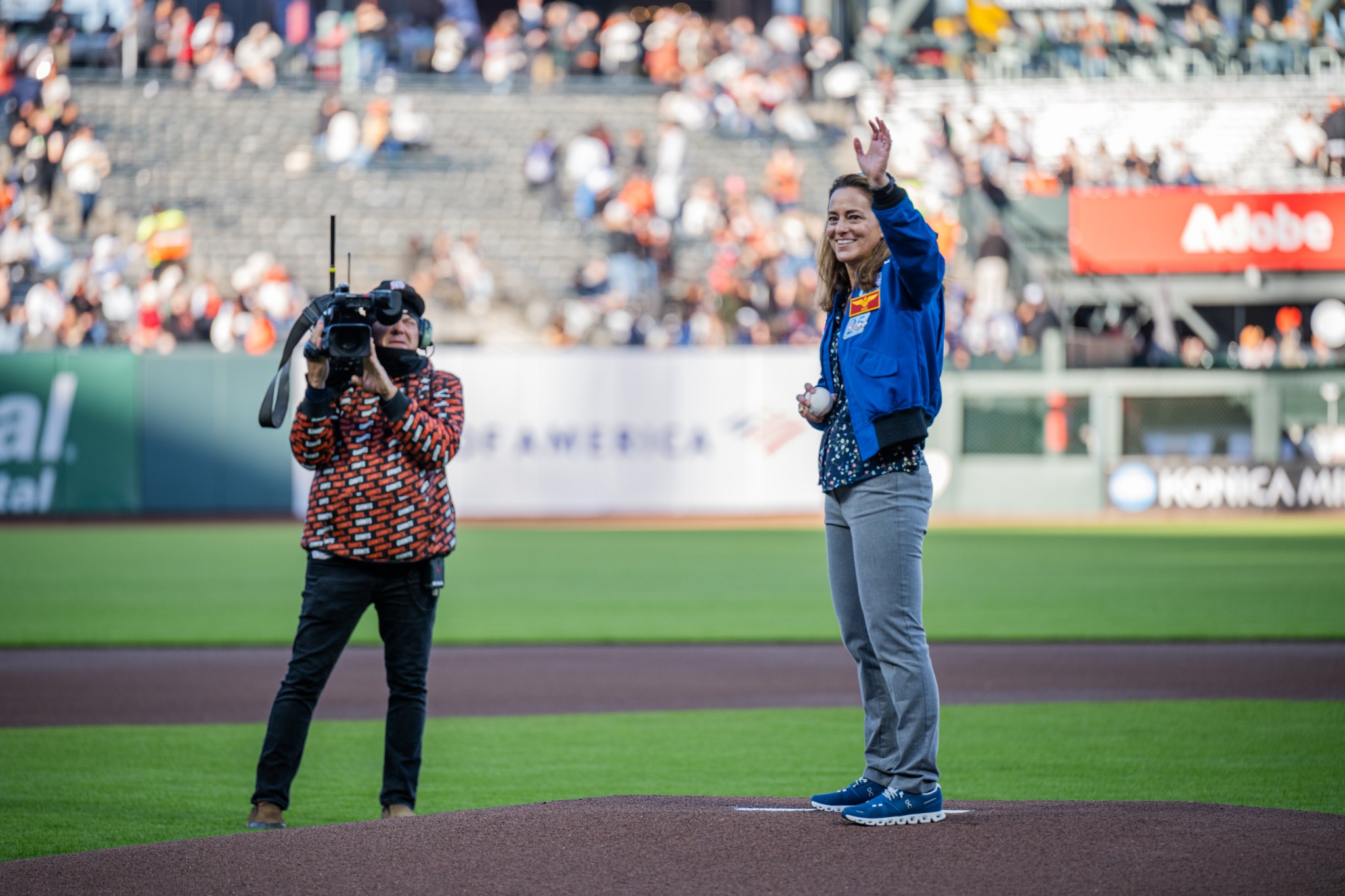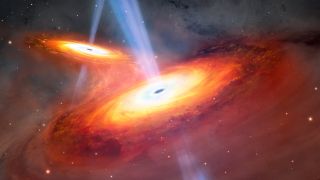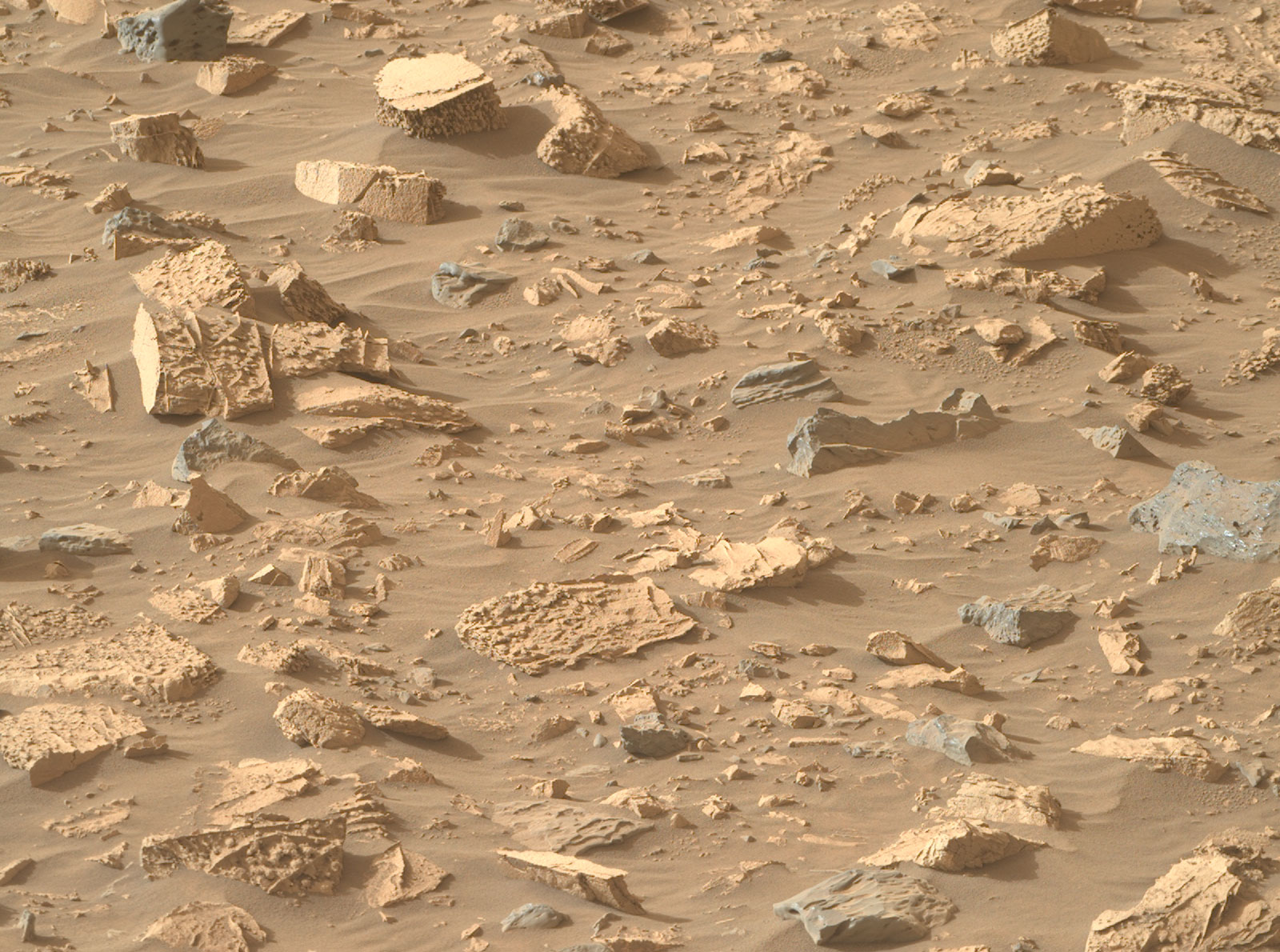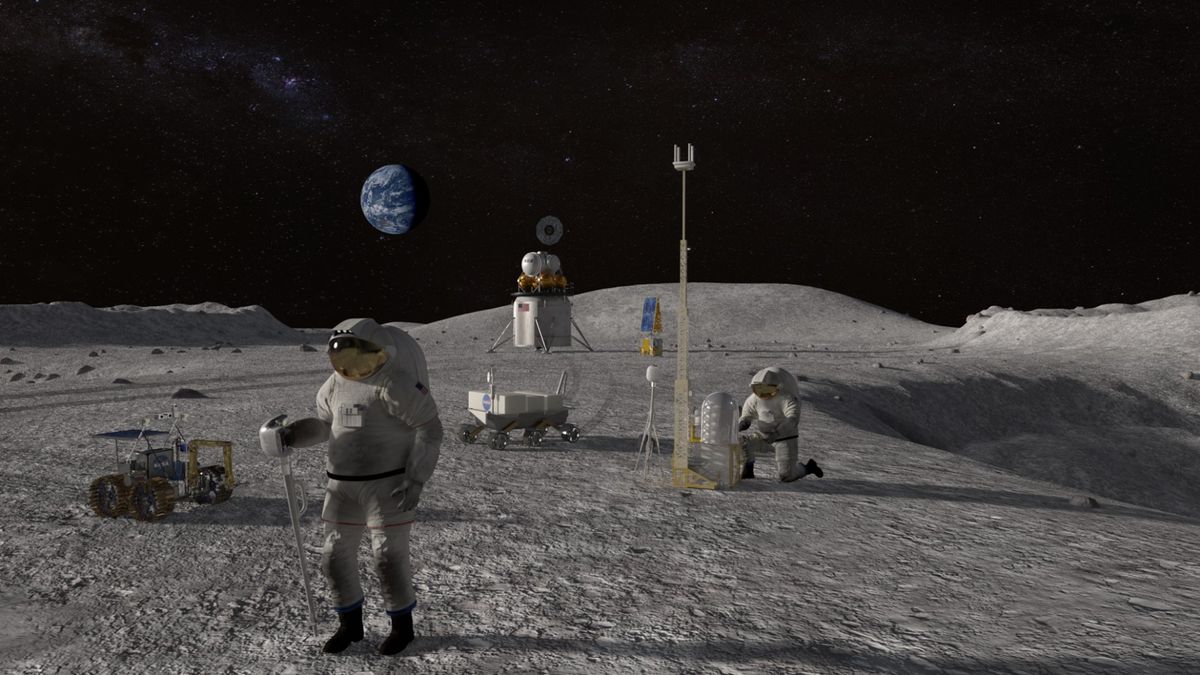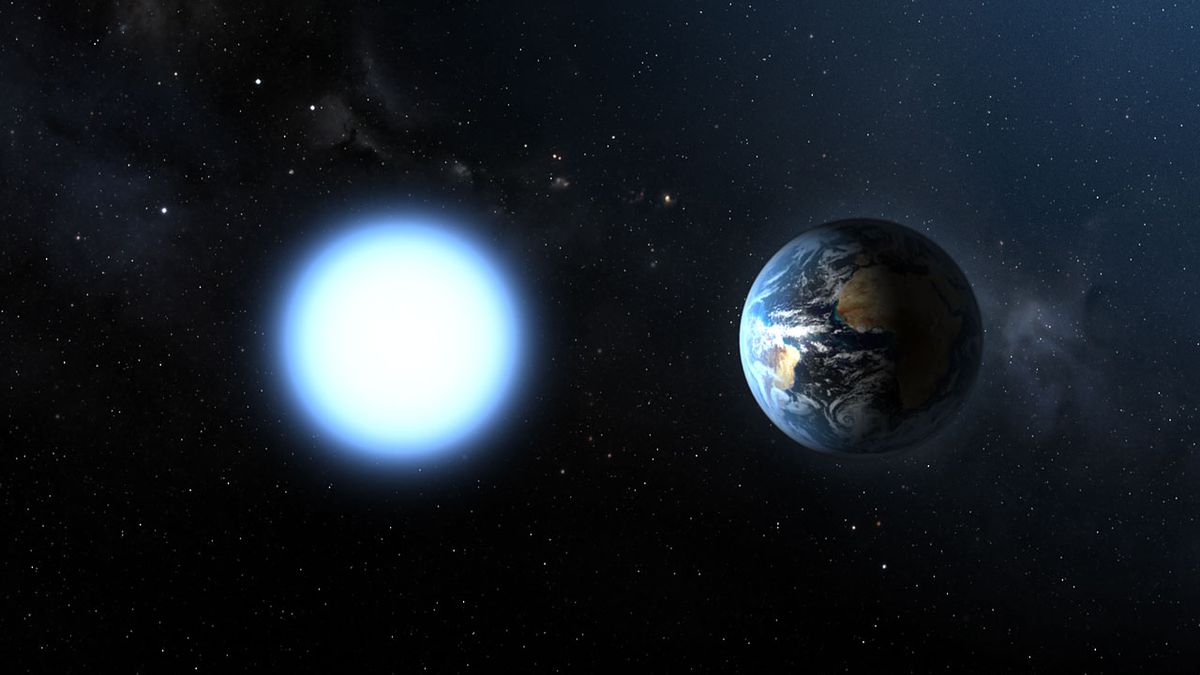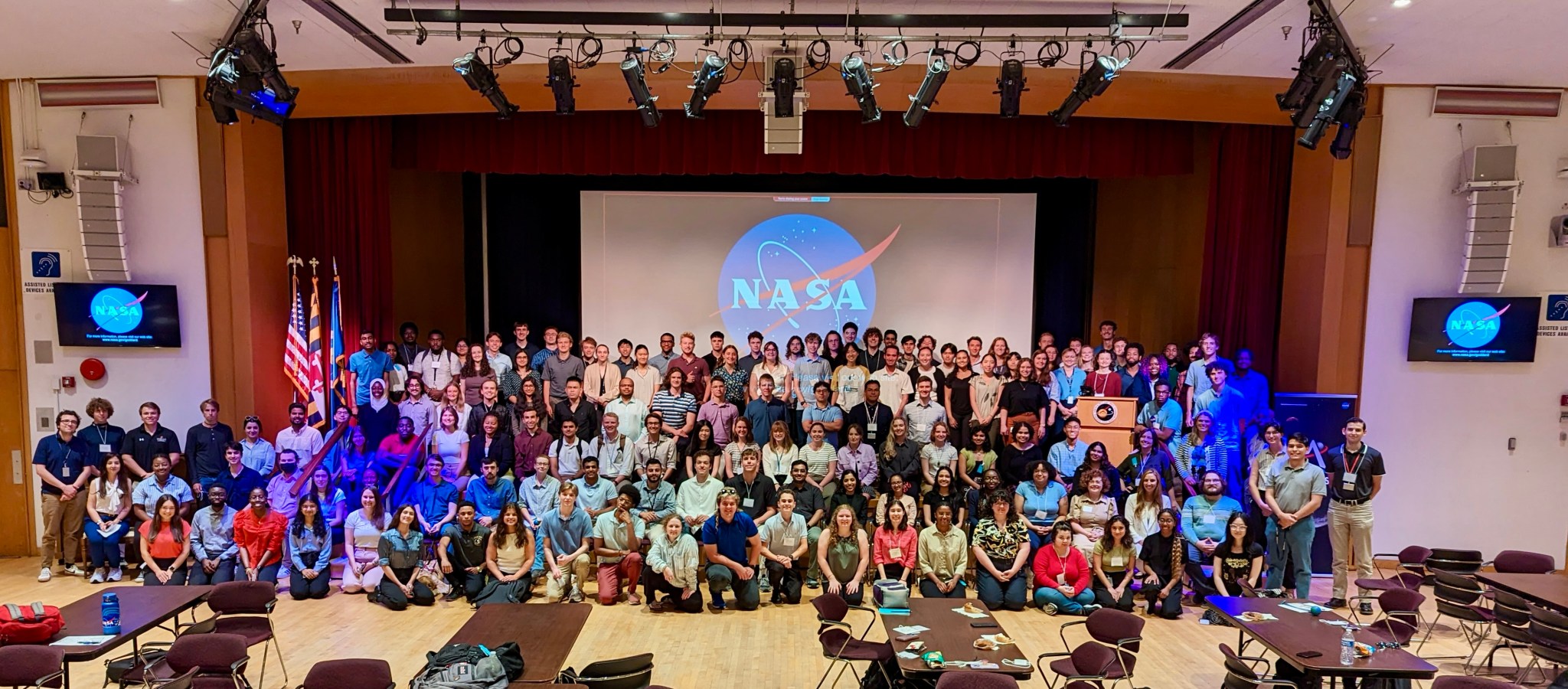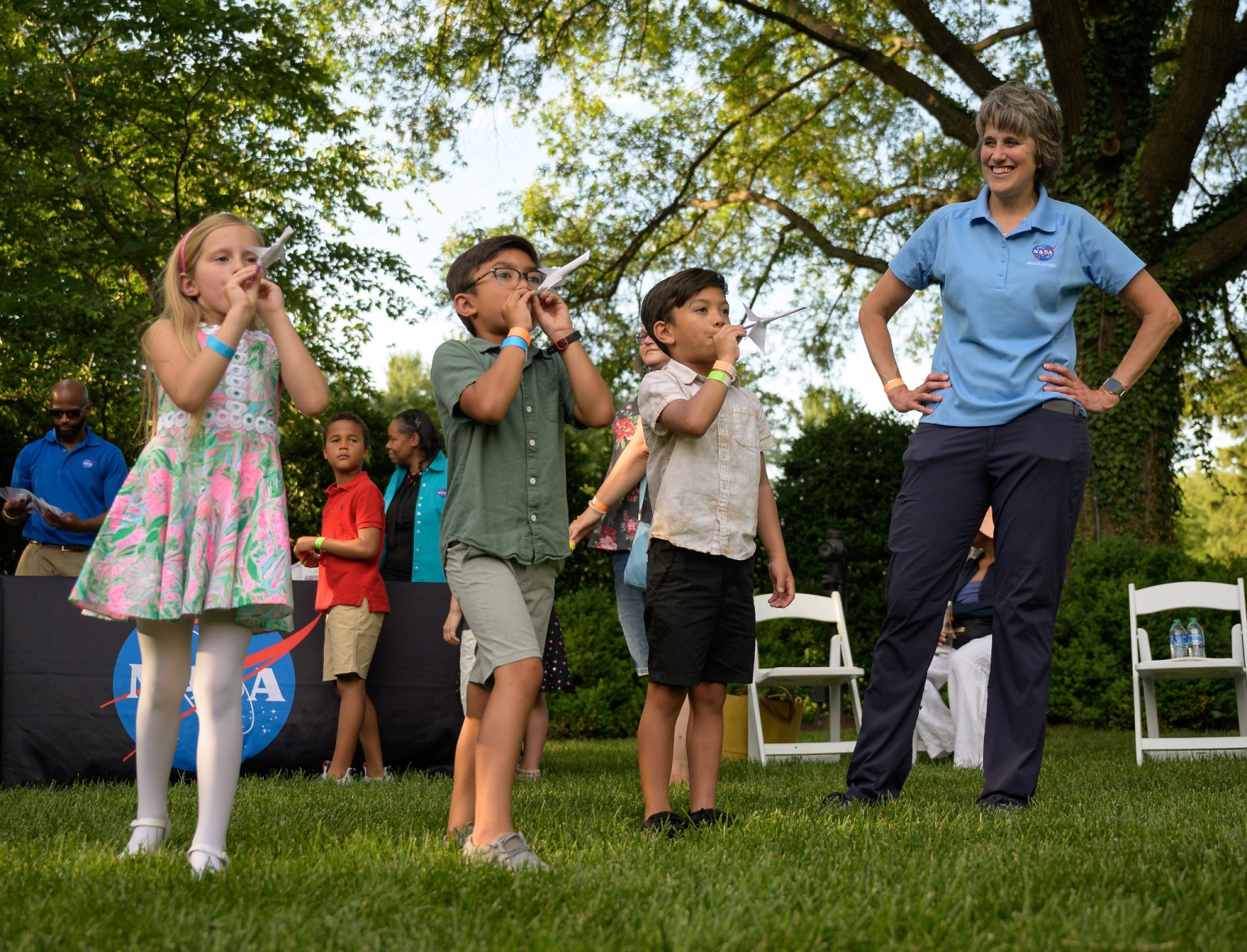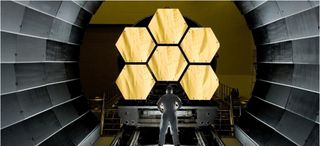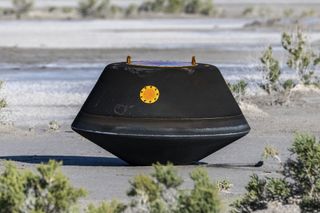NASA/Brandon Torres NASA astronaut Nicole Mann waves as she is introduced before throwing out the ceremonial first pitch at the San Francisco Giants versus Los Angeles Angels game at Oracle Park in San Francisco on June 14, 2024. Mann was honored for her accomplishments at the Giants’ Native American Heritage Night. She is the first Indigenous woman from NASA to go to space, having served as commander of NASA’s SpaceX Crew-5 mission, which launched in 2022.
Read MoreMonth: June 2024
How 2 quasars at the dawn of time could be a Rosetta stone for the early universe
A double quasar spiraling toward a great merger has been discovered lighting up the “cosmic dawn,” just 900 million years after the Big Bang. They are the first quasar pair spotted that far back in cosmic time. Quasars are rapidly growing supermassive black holes in the cores of hyperactive galaxies. Torrents of gas are thrust down the black holes’ throats and get hung up in the bottleneck of an accretion disk, which is a dense ring of ultrahot gas that is queuing up to fall into the black hole. Not…
Read MorePerseverance Finds Popcorn on Planet Mars
Perseverance Perseverance Mission Overview Rover Components Where is Perseverance? Ingenuity Mars Helicopter Mission Updates Science Overview Science Objectives Science Instruments Science Highlights News and Features Multimedia Perseverance Raw Images Mars Resources Mars Exploration All Planets Mercury Venus Earth Mars Jupiter Saturn Uranus Neptune Pluto & Dwarf Planets 2 min read Perseverance Finds Popcorn on Planet Mars Mars Perseverance Sol 1175 – Right Mastcam-Z Camera: A jumbled field of light toned rocks with unusual ‘popcorn’-like textures and abundant mineral veins. NASA’s Mars Perseverance rover acquired this image using its Right Mastcam-Z…
Read MoreIf we really want people living on the moon, we need an astronaut health database
Scientists have created the first-ever aerospace medicine biobank to help outline the impact spaceflight has on astronauts’ health. This repository integrates data and samples from various missions, including those performed by SpaceX and NASA, enabling researchers to compare and standardize space medicine findings and apply their results to future missions. “This represents a breakthrough in the study of human adaptation and life in space,” said Guy Trudel, one of the scientists behind the study and a professor in the Faculty of Medicine at the Ottawa Hospital Research Institute, in a…
Read MoreLife after stellar death? How life could arise on planets orbiting white dwarfs
Planets could survive the death of their star and become capable of supporting life — and now astronomers are going to go hunting for them. Stars do not survive forever, the sun included. In about five billion years, Earth’s star will begin to exhaust its supply of hydrogen used to generate energy via nuclear fusion in its core. The sun’s core will then begin to contract, increasing the temperature so that hydrogen in its outer envelope can then ignite fusion reactions that will cause the sun — and other stars…
Read MoreNASA Interns Blast Off for Their First Week at Goddard
Several hundred new faces walked through the gates of NASA’s Goddard Space Flight Center in Greenbelt, Maryland, for the first time on June 3. Who is this small army of motivated space-enthusiasts? It’s Goddard’s 2024 summer intern cohort. Across Goddard’s campuses, more than 300 on-site and virtual interns spend the 10-week program contributing across all manners of disciplines, science, engineering, finance, communications, and many more. From helping engineers who will send new space telescopes into orbit, to communicating NASA’s scientific discoveries to the world, this cohort of interns hopes to…
Read MoreSlow Your Student’s ‘Summer Slide’ and Beat Boredom With NASA STEM
4 Min Read Slow Your Student’s ‘Summer Slide’ and Beat Boredom With NASA STEM Creating and testing soda-straw rockets is a fun way for younger students to avoid the “summer slide” and stay engaged in STEM during summer vacation. Credits: NASA The school year has come to an end, and those long summer days are stretching ahead like an open runway. Parents and educators often worry about the “summer slide,” the concept that students may lose academic ground while out of school. But summer doesn’t mean students’ imaginations have to…
Read MoreManagement and Program Analyst Mallory Carbon
“I feel that my larger purpose at NASA, which I’ve felt since I came on as an intern, is to leave NASA a better place than I found it.” — Mallory Carbon, Management and Program Analyst, NASA Headquarters
Read MoreThe universe’s biggest explosions made some of the elements we are composed of. But there’s another mystery source out there
After its “birth” in the Big Bang, the universe consisted mainly of hydrogen and a few helium atoms. These are the lightest elements in the periodic table. More-or-less all elements heavier than helium were produced in the 13.8 billion years between the Big Bang and the present day. Stars have produced many of these heavier elements through the process of nuclear fusion. However, this only makes elements as heavy as iron. The creation of any heavier elements would consume energy instead of releasing it. In order to explain the presence…
Read MoreNASA’s asteroid sample mission gave scientists around the world the rare opportunity to study an artificial meteor
Earth is constantly bombarded by fragments of rock and ice, also known as meteoroids, from outer space. Most of the meteoroids are as tiny as grains of sand and small pebbles, and they completely burn up high in the atmosphere. You can see meteoroids larger than about a golf ball when they light up as meteors or shooting stars on a dark, clear night. While very small meteoroids are common, larger ones – bigger than a dishwasher – are not. Meteoroids are difficult objects for aerospace and geophysics researchers like…
Read More